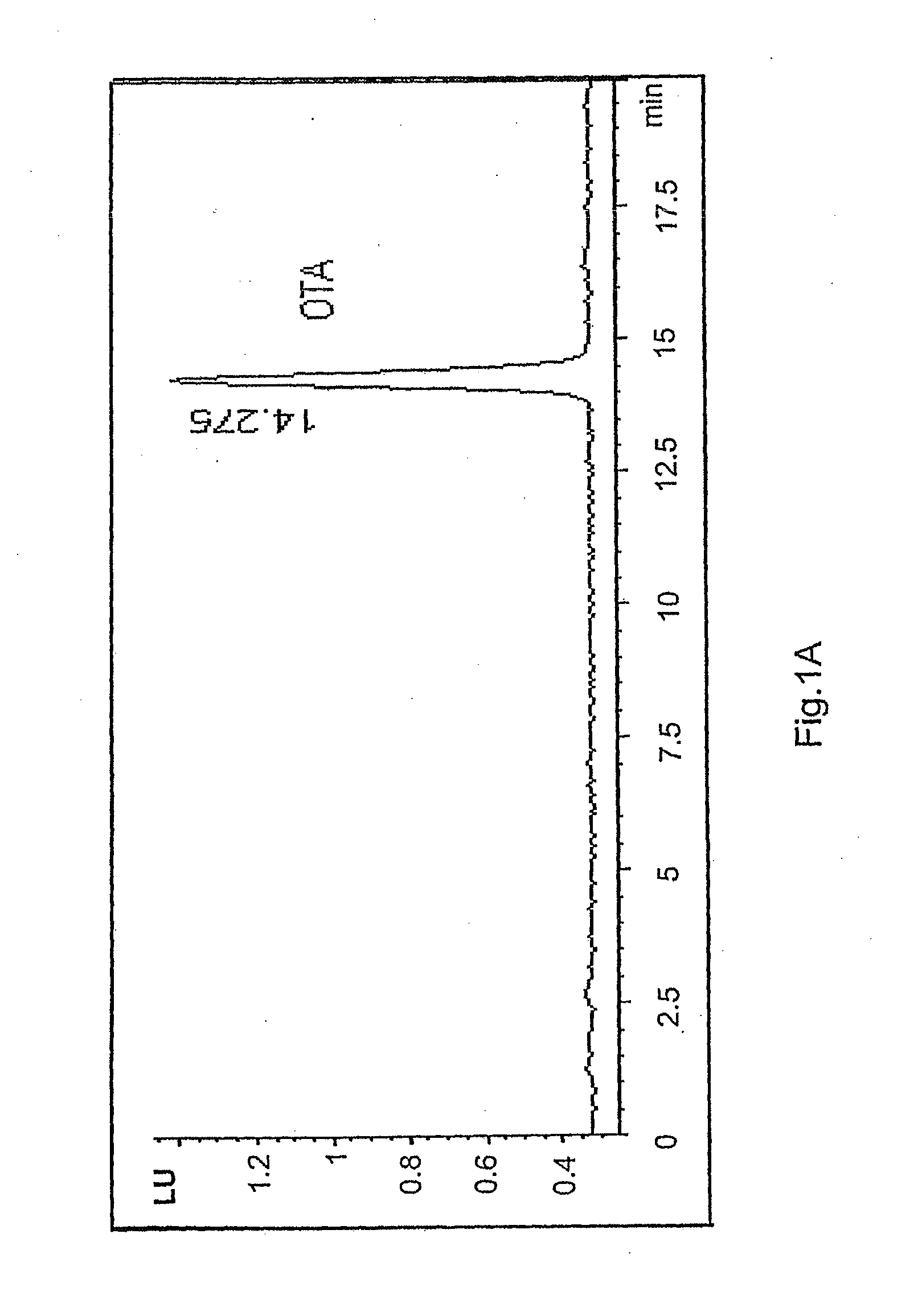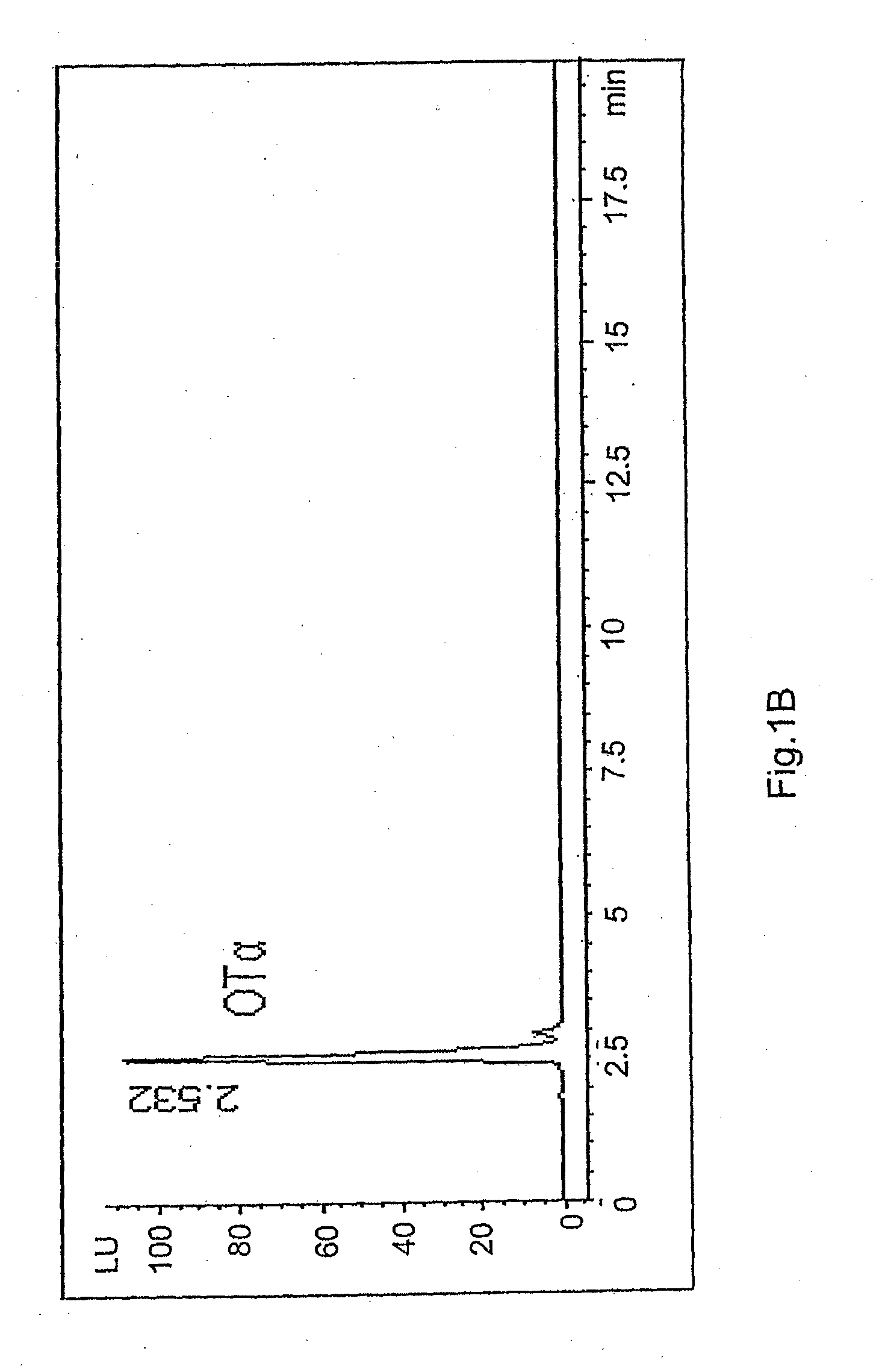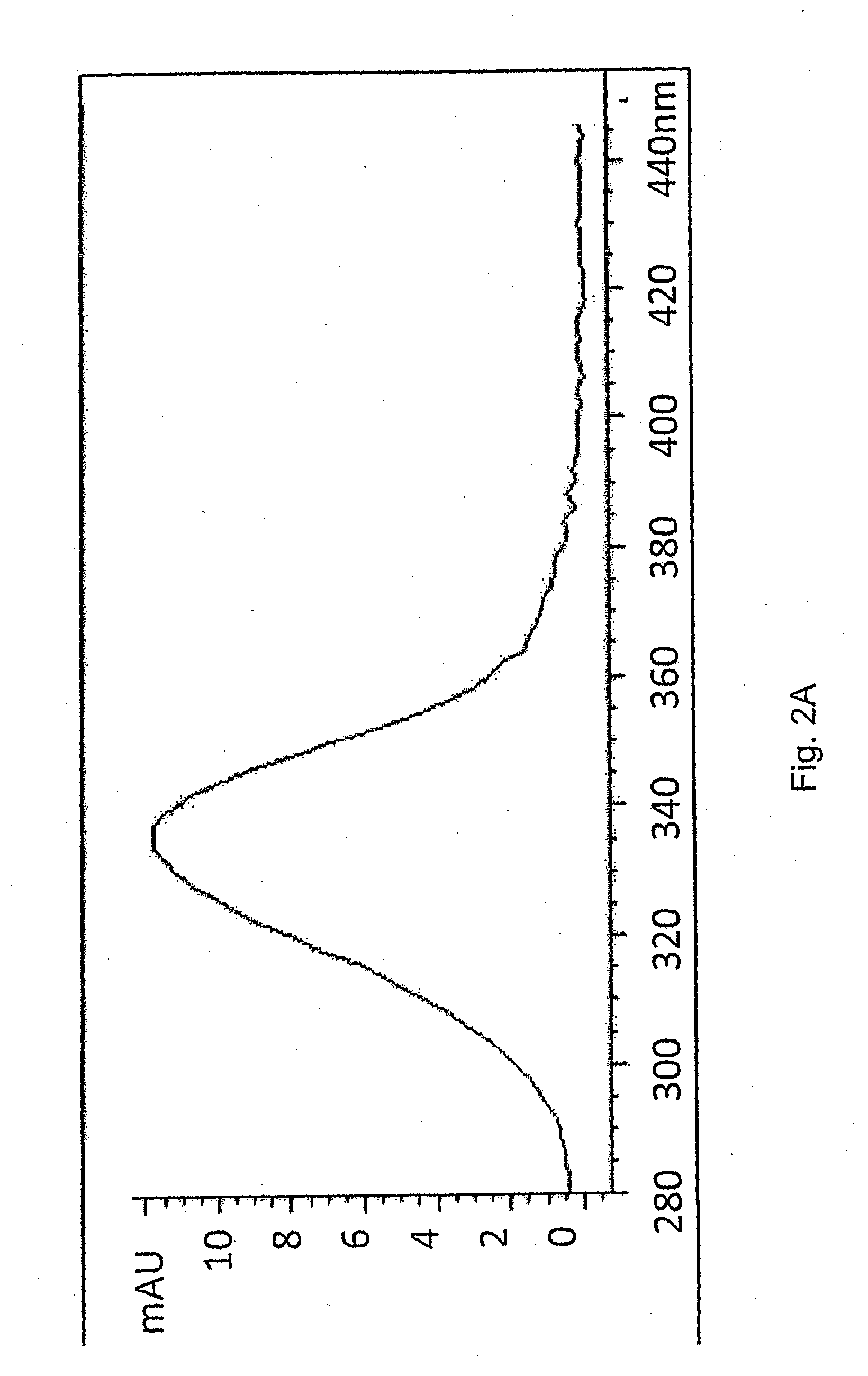Biological degradation of ochratoxin a into ochratoxin alpha
a technology of ochratoxin and alpha, which is applied in the field of biochemical degradation of ochratoxin a into ochratoxin alpha, can solve the problems of no microorganism, no ochratoxin present, and no ochratoxin used in the food industry to degrade ota
- Summary
- Abstract
- Description
- Claims
- Application Information
AI Technical Summary
Benefits of technology
Problems solved by technology
Method used
Image
Examples
example 1
Detection of the OTA Degradation Capacity of Various Strains of Pseudomonas, Rhodococcus and Brevibacterium
[0054]Due to the fact that soil bacteria are capable of transforming a wide variety of aromatic compounds, various species of Actinobacterias and Pseudomonas were initially cultured in liquid synthetic culture media such as BSM (basal salt medium) in the presence of OTA (10 μg / L).
1.1. Bacterial Strains Used and Bacteria Culturing.
[0055]In order to detect the capacity to degrade OTA, cultures of the strains Rhodococcus erythropolis CECT 3008, Rhodococcus erythropolis IGTS8, Pseudomonas putida DSMZ 291, Pseudomonas putida KT2442 and seven strains of various species of the genus Brevibacterium were used.
[0056]Rhodococcus erythropolis CECT 3008 (DSMZ 43060) was obtained from the Spanish Type Culture Collection (CECT). Pseudomonas putida DSM 291T and six strains of Brevibacterium belonged to the German Collection of Microorganisms and Cell Cultures (DSMZ) (Brevibacterium epidermidi...
example 2
Degradation of OTA by Brevibacterium
[0068]Additional assays were performed using a larger number of Brevibacterium strains to confirm the observations with B. casei RM101 and to verify if this ability is a specific feature of the strain, species or genus being studied.
[0069]Additionally, in order to confirm the degradation of OTA by Brevibacterium spp., the strains were cultured in BSM medium with a four-fold concentration of OTA (40 μg / L). The Brevibacterium strains were cultured under aerobic conditions with agitation at 150 rpm for 10 days. These assays were performed in culture media containing OTA at a concentration of 40 μg / L. OTA levels equivalent to 40 μg / L are rarely found in foods or beverages. The degradation assays were performed as described in example 1.
TABLE 2Decrease in ochratoxin A (OTA) in BSM medium achieved byBrevibacterium.Decrease ofOTAOTAStrains(μg / L)a(%)BSM + OTA (Control)39.810Brevibacterium casei DSM 20657Tn.d.100Brevibacterium casei DSM 9657n.d.100Breviba...
example 3
Mechanism of OTA Degradation by Brevibacterium
[0072]The strains B. casei RM101 and B. linens DSM 20425T were used, in order to confirm the capacity of these strains to degrade OTA at a higher concentration (40 mg / L), 1000-fold the concentration used in the previous assay, and to confirm the capacity of these strains to use OTA as a sole source of carbon. In this case the strains were cultured in BSM medium wherein glycerol (0.2%) and OTA (40 mg / L) were or were not present to thereby study the possible use of OTA as a sole source of carbon. The degradation assays were performed as described in example 1.
[0073]It has been possible to elucidate the mechanism of OTA degradation carried out by Brevibacterium spp. by analyzing the HPLC and mass spectrometry data of these strains, B. casei RM101 and B. linens DSM 20425T.
TABLE 3Decrease in ochratoxin A (OTA) and production of ochratoxin α (OTα)by Brevibacterium casei RM101 and Brevibacterium linens DSM20425T in BSM medium with different co...
PUM
| Property | Measurement | Unit |
|---|---|---|
| temperature | aaaaa | aaaaa |
| temperature | aaaaa | aaaaa |
| volume | aaaaa | aaaaa |
Abstract
Description
Claims
Application Information
 Login to View More
Login to View More - R&D
- Intellectual Property
- Life Sciences
- Materials
- Tech Scout
- Unparalleled Data Quality
- Higher Quality Content
- 60% Fewer Hallucinations
Browse by: Latest US Patents, China's latest patents, Technical Efficacy Thesaurus, Application Domain, Technology Topic, Popular Technical Reports.
© 2025 PatSnap. All rights reserved.Legal|Privacy policy|Modern Slavery Act Transparency Statement|Sitemap|About US| Contact US: help@patsnap.com



